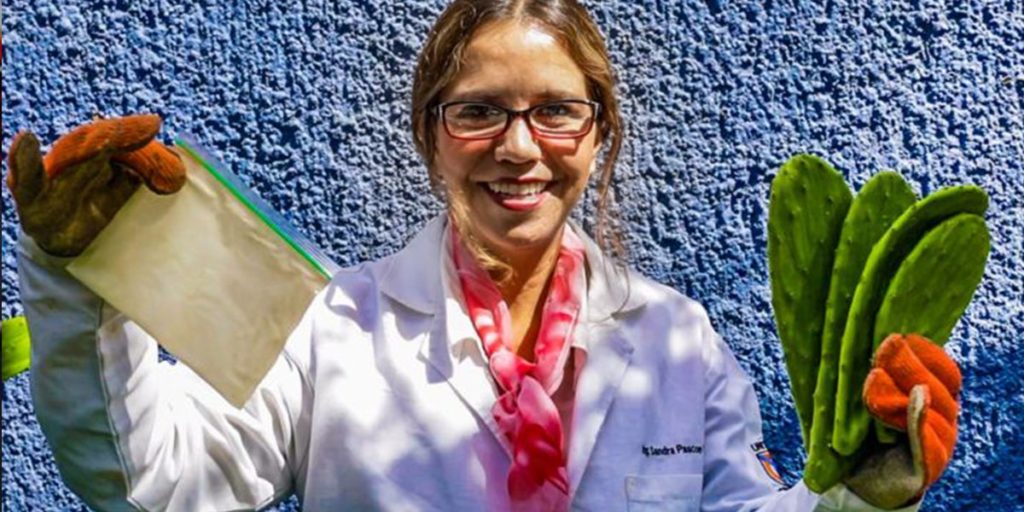No products in the cart.
Scientist discovers “Fake Cactus Plastic” that can decompose within 30 days, can feed fishes in Ocean
A Mexican research scientist has discovered a wonderful technique to turn cactus leaves into a pliable material with base properties quite similar to plastic. Interestingly, the product is biodegradable and is also non-toxic which means that it starts to break down or decompose after remaining in the soil for about a month, and in water after a matter of days.
Conventional plastics take over 500 years to break down after sitting in soil but the new biodegradable plastic made from cactus juice is seen as the futuristic possibilities.

Interestingly, the product is biodegradable and is also non-toxic which means that it starts to break down or decompose after remaining in the soil for about a month, and in water after a matter of days. Conventional plastics take over 500 years to break down after sitting in soil but the new biodegradable plastic made from cactus juice is seen as the futuristic possibilities.
Sandra Pascoe Ortiz, of the University of the Valley of Atemajac, works as a resourceful engineer in the department and she was the one who developed the material. She explained: “It’s a non-toxic product. All the materials we use can be ingested both by humans or animals. And they wouldn’t cause any harm.”
So even if the ‘fake’ cactus plastic somehow makes its way into the ocean, it will either be a food to fish or dissolve, means this plastic would cause no harm to marine organisms.
Presently, the manufacturing process is limited to Ortiz’s lab. So, it takes her ten days to make a batch of material out of cactus juice, along with other renewable constituents.
But the scientist Ortiz strongly feels that the process would be quick to compete with ordinary plastic just in case if her operation was widely expanded to an industrial size facility.
Other technique:
Scientists have also found a revolutionary technique that converts plastic waste into a 100% clean fuel so that we can effectively reduce and recycle all the waste.
Researchers at Purdue University came up with a new chemical technique that can adapt polypropylene. This is the plastic which is used for toys, chip packets. The process makes use of superheated water to turn the waste plastic into liquid fuel quite similar to that of petrol and diesel which could be used in today’s cars.
“Our strategy is to create a driving force for recycling by converting polyolefin waste into a wide range of valuable products, including polymers, naphtha (a mixture of hydrocarbons), or clean fuels,” Linda Wang, the research team’s leader, said in a press release.
“Our conversion technology has the potential to boost the profits of the recycling industry and shrink the world’s plastic waste stock.” According to scientists, around five billion tons of waste plastic is blocking our planet and they estimate about 23 per cent of it is made up of ‘polypropylene’.
According to scientists, around five billion tons of waste plastic is blocking our planet and they estimate about 23 per cent of it is made up of ‘polypropylene’.
In their scientific method, the researchers used supercritical water, which is when water functions as liquid and gas under extremely high temperature and pressure. After that, this is added to the polypropylene, which converts it to oil within a few hours.
In their scientific method, the researchers used supercritical water, which is when water functions as liquid and gas under extremely high temperature and pressure. After that, this is added to the polypropylene, which converts it to oil within a few hours.
“Plastic waste disposal, whether recycled or thrown away, does not mean the end of the story,” Wang said. “These plastics degrade slowly and release toxic microplastics and chemicals into the land and the water. This is a catastrophe because once these pollutants are in the oceans, they are impossible to retrieve completely.”












